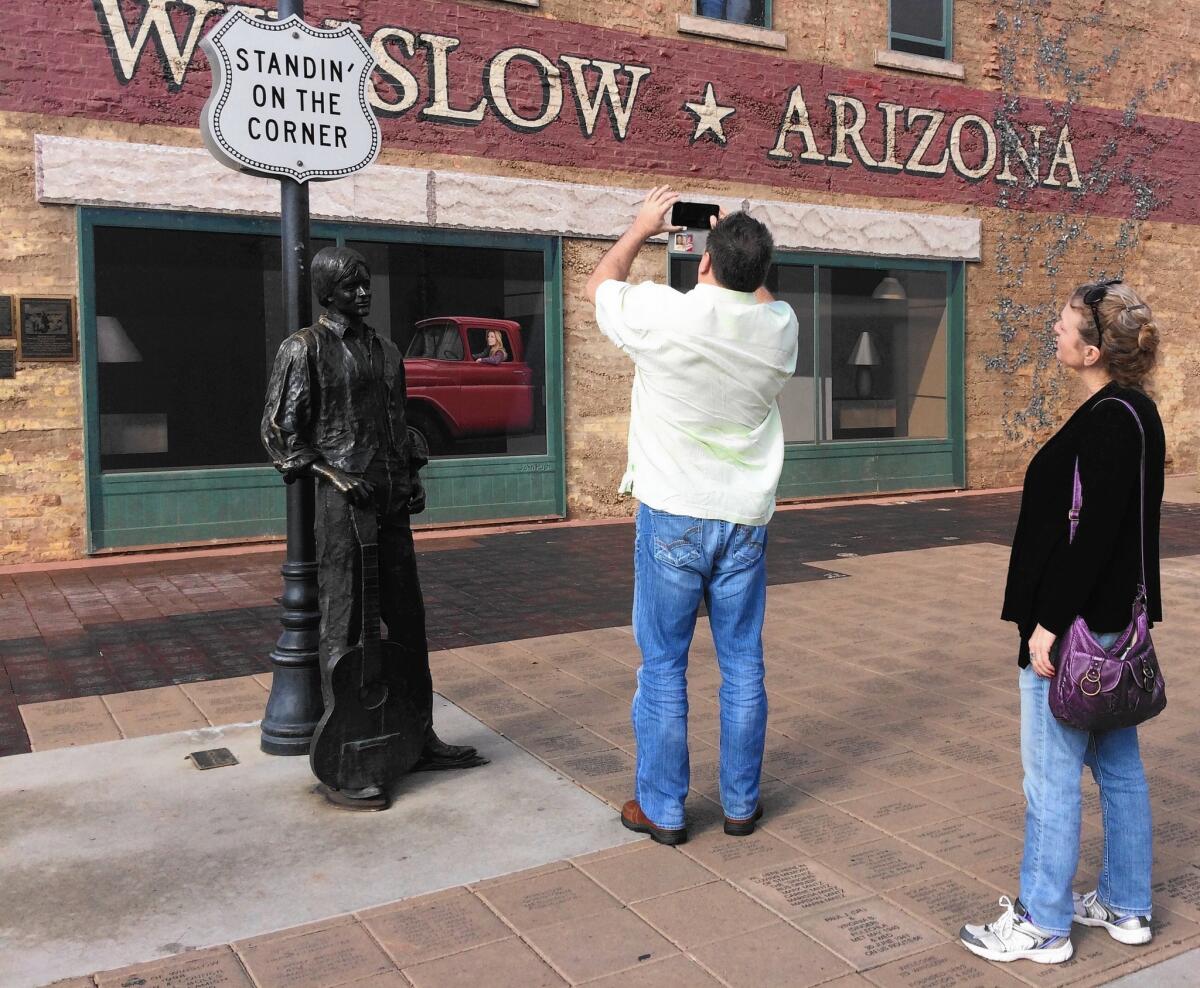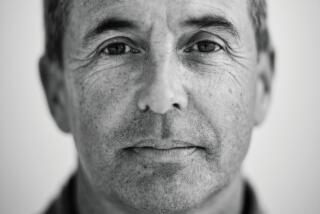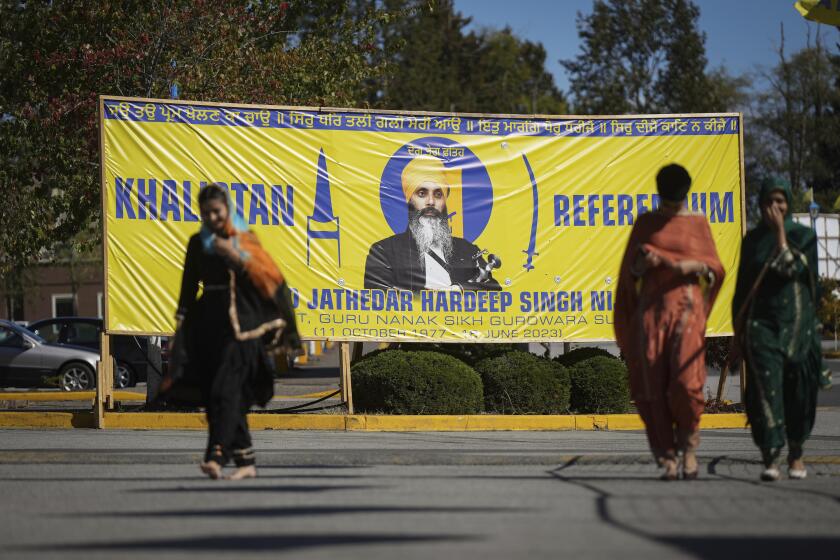It’s the corner, and statue, that made Winslow, Arizona, famous

Well, I’m a standin’ on a corner in Winslow, Arizona. And I’m not alone.
With me are a cute couple from Southern California, who are shivering in the winter chill; three giggling women on break from a holiday office party; and a beefy guy in blue jeans and a lime-green shirt who didn’t say where he’s from.
But it’s no secret why he came. We are among the estimated 100,000 people who will visit this same spot over the next 12 months, drawn by nostalgia to a town whose best days ended decades ago.
“It’s really crazy. People come here from all over the world,” said Emma, a clerk at the souvenir shop across the street. “They are in such awe of the place.”
For that you can thank Jackson Browne, Glenn Frey and “Take It Easy,” their 1972 rock song about women, the open road and salvation, which included a verse about standing on a corner in Winslow, Arizona.
The song was the first single for a fledgling L.A. band called the Eagles, who would become the best-selling American rock group of all time. And the song helped propel the band and Browne into the Rock and Rock Hall of Fame.
But it’s been even bigger for Winslow, with that one inexplicable lyric about a nondescript street corner giving hope of a renaissance to a town whose economy has taken repeated body blows over the years.
Born as a railroad hub, Winslow was once the most important city in northern Arizona. When train travel declined after World War II, the town reinvented itself, becoming an important stop along Route 66.
Then Interstate 40 opened, and in 1979 a bypass, diverting traffic away from the town and bleeding Winslow dry.
“It was immediate,” local historian Ann-Mary Lutzick said of the impact the interstate had on the town. “Sometimes people think the bypass was the thing that primarily affected Winslow’s downtown. But it was really sort of the final nail in the coffin.”
Without the tourists, the small brick stores and restaurants that make up Winslow’s once-bustling city center went out of business. National chains, such as Wal-Mart and McDonald’s, added to the misery by setting up shop next to the highway, drawing even locals away from downtown.
“We were just like Radiator Springs. We dried up,” said longtime resident Gregory Hackler, comparing Winslow to a fictional hard-luck Route 66 town in the Pixar film “Cars.”
So Hackler, a chiropractor, and some other city leaders hit on an idea: They found a spot on the eastbound side of Route 66, at 2nd and Kinsley streets, where kids used to congregate between a pair of drug stores. And in 1999 they dropped a statue of a floppy-haired troubadour with his guitar on the corner, then invited visitors to take a picture.
And you know what? It worked.
Lutzick, director of the Old Trail Museum around the corner from the Corner, estimates that 100,000 visitors come to Winslow each year to see the life-size bronze named “Easy,” who stands before a mural depicting a flatbed Ford and other key passages from the song.
“People were stopping and taking pictures on corners in Winslow anyway. So they were quite brilliant to realize that they should capitalize on this interest,” Lutzick said of Hackler’s organization, which became known as the Standin’ on the Corner Foundation. “Whether you like the song or not, whether you like Winslow or not, you’re going to take a picture of the corner.”
Speaking of which, neither Browne nor Frey say they had been there before writing the song, which the Eagles recorded seven years before the highway bypass opened.
Browne was traveling through Arizona when he began working on the song. But the scene about the corner and a girl in the Ford was written by Frey after Browne related an incident involving a girl, a Toyota pickup and the parking lot of a Der Wienerschnitzel.
“It was always Winslow,” Browne said in an interview a few months after Standin’ on the Corner Park opened. “But the image of that girl driving a truck was an image that came from east.” To be precise, from East Flagstaff.
So Frey exercised poetic license, and the result would later be voted one of the 500 most influential songs in rock history.
But if “Take It Easy” helped put Winslow on the map, it hasn’t loosened its load. Fifteen years after Standin’ on the Corner Park opened, the U.S. Census Bureau says per capita income in Winslow lags well below the state and national average. Nearly a quarter of its 9,500 people — 1,000 of whom reside in the state prison on the edge of town — live below the poverty line.
A few yards up 2nd Street from the Corner, Stephen Rogers, the cook at Dar’s Route 66 Diner, says the 1950s-style restaurant sees few tourists. From the diner’s huge storefront window he can see the visitors pull up to the park, take their pictures and dash right back to I-40.
“Not as much as I thought it would,” he said of the park’s impact on the restaurant.
But for Emma, the store clerk (who has tired of visiting reporters using her full name), the park is more about momentum than money; it’s a sign that Winslow doesn’t need a railroad or even a highway to find its way.
Without prompting, she pulls out photos of a massive 2007 fire that threatened the Corner, destroying half the block. Although the mural and the wall it graces were damaged, both survived.
“Maybe it doesn’t have magical powers, but it’s been like a godsend to us,” Emma said of the park. “It’s helped us so much.”
And it’s such a fine sight to see.
More to Read
Start your day right
Sign up for Essential California for news, features and recommendations from the L.A. Times and beyond in your inbox six days a week.
You may occasionally receive promotional content from the Los Angeles Times.







